Do you want to upgrade your home decor with something truly unique and special? Are you looking for a way to show off your personality without breaking the bank? Do you have a vinyl project that you’ve been wanting to transfer to wood? If so, transferring vinyl onto wood can be an excellent option! With this project, you can customize pieces of furniture or walls with images that are important to you.
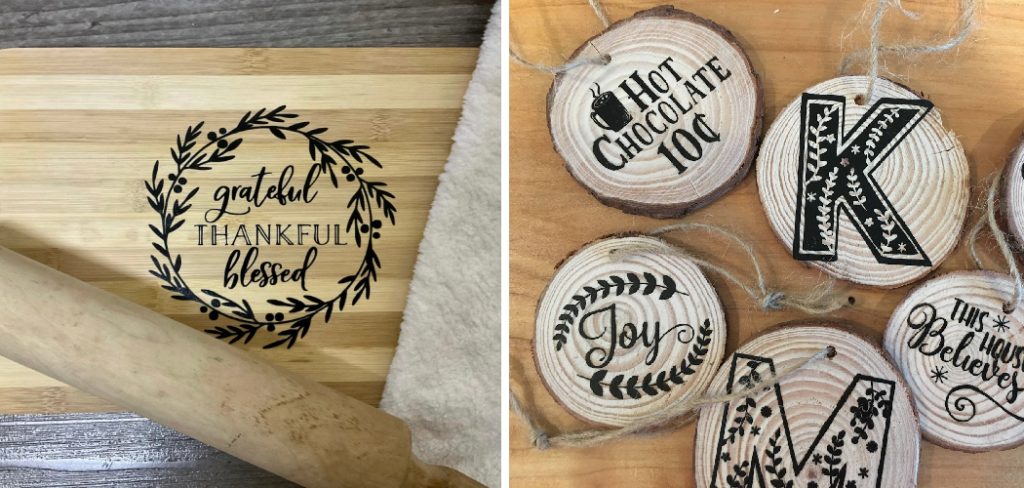
Look no further—we’ll help guide you through the simple steps on how to transfer vinyl to wood needed for a successful transfer. Let’s dive into how to transfer vinyl best; learn about types of surfaces, prepare both materials and then finally complete the job. Exclusively decorative in nature yet still design-savvy– it’s time to add some classiness on a budget! So grab some tools, put on your craftiest clothes, and let’s get started!
What is Vinyl?
Before we start, let’s get familiar with the material itself. Vinyl is an incredibly versatile material that can be used for a number of different projects. It’s also relatively easy to work with, and it sticks well to many surfaces. The most common type of vinyl used in home decor is adhesive vinyl, which is a flexible plastic-like material that adheres to surfaces when pressure is applied.
What Supplies Will You Need?
Now that we know more about vinyl let’s talk about the supplies you need for a successful transfer. Here’s a list of all the materials and tools you should have on hand before starting:
- Vinyl
- Wood
- Tape measure
- Craft knife
- Pencil
- Transfer tape
- Squeegee or credit card
- Light fabric (optional)
Preparing the Wood Surface for Transferring Vinyl
Before you get started with the transfer, you need to make sure that your wood surface is ready. To do this, begin by cleaning the surface with a damp cloth and then let it air dry completely. Next, use a tape measure to make sure the wood is level and free of any bumps or uneven areas.
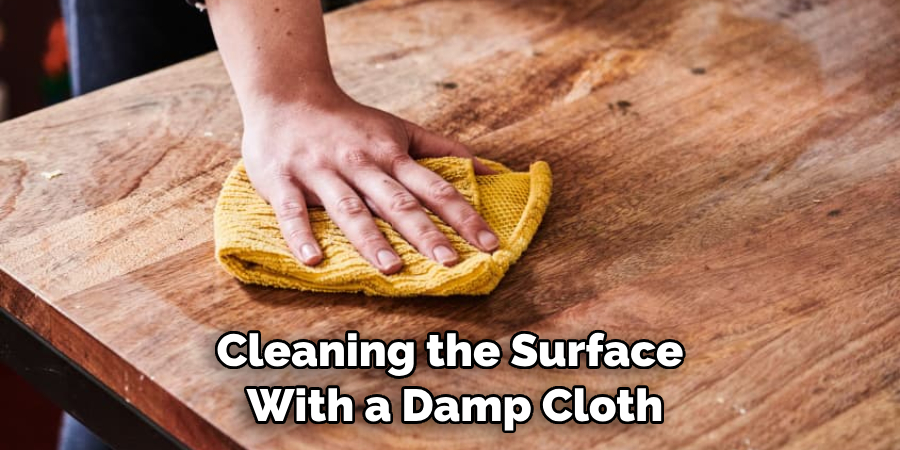
If there are any rough spots or splinters on your wood, you should sand them down using medium-grit sandpaper and then wipe away any excess dust. You may also want to add a coat of sealer or varnish before beginning the transfer. These steps will help ensure that your vinyl transfers smoothly and adheres securely.
Preparing the Vinyl
Once you have prepared your wood surface, it’s time to get your vinyl ready for the transfer. Begin by measuring out the exact size of the vinyl you need, and then use a craft knife to cut it out. If you’re working with adhesive vinyl, the next step is to apply transfer tape to the top of your vinyl design. This will help keep the pieces in place during the transferring process.
How to Transfer Vinyl to Wood in 8 Steps
Step 1: Clean the Surface
Make sure your wood surface is clean and dry. Also, ensure there are no bumps or splinters and that the wood is level. Keep in mind that if you’re transferring to a painted surface, the paint should be completely dry.
Step 2: Measure and Cut Vinyl
Measure out the size of your vinyl design, and then use a craft knife to cut it out. If using adhesive vinyl, apply transfer tape to the top of the design before continuing.
Step 3: Position Vinyl on Wood
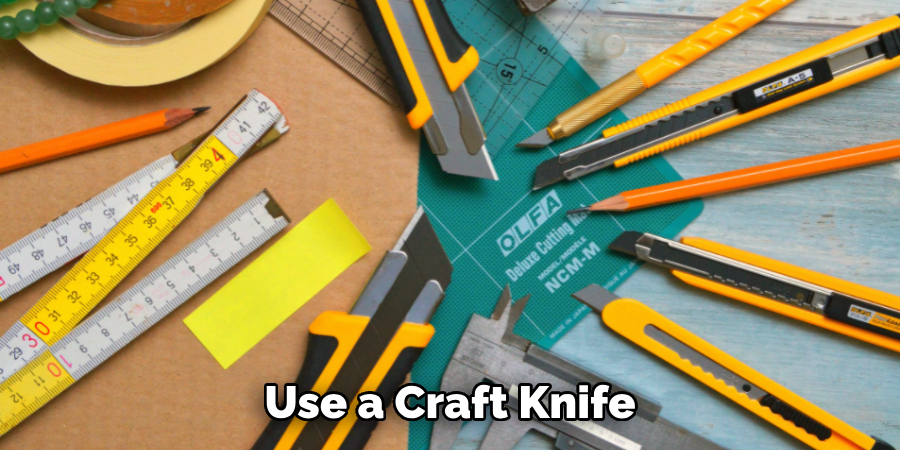
Position your vinyl design onto the wood surface. Make sure it is aligned properly and that all of the edges of the vinyl are flush with the edges of the wood. Positioning the vinyl correctly is critical for a successful transfer.
Step 4: Secure with Tape
Use tape to secure the edges of the vinyl to the wood so that it stays in place as you transfer. Make sure you use enough tape so that all sides of your design are held firmly in place.
Step 5: Rub with Squeegee
Starting from the middle of your design and working outwards, use a squeegee or credit card to rub across the surface. This will help ensure that all of the vinyl adheres securely to the wood.
Step 6: Peel Away Transfer Tape
Once you have finished rubbing with your squeegee, carefully peel away the transfer tape. Make sure that all of the vinyl pieces remain in place as you do this. If any pieces come up, carefully press them back into place with a squeegee or credit card.
Step 7: Heat Set Vinyl
Once your vinyl is successfully transferred to the wood surface, it’s time to heat set it. To do this, turn on an iron to the lowest setting and place a light fabric over your vinyl. Gently press the iron onto the fabric for 15-20 seconds, then let it cool before moving on to the next section. Repeat this process until all of your vinyl has been heat set.
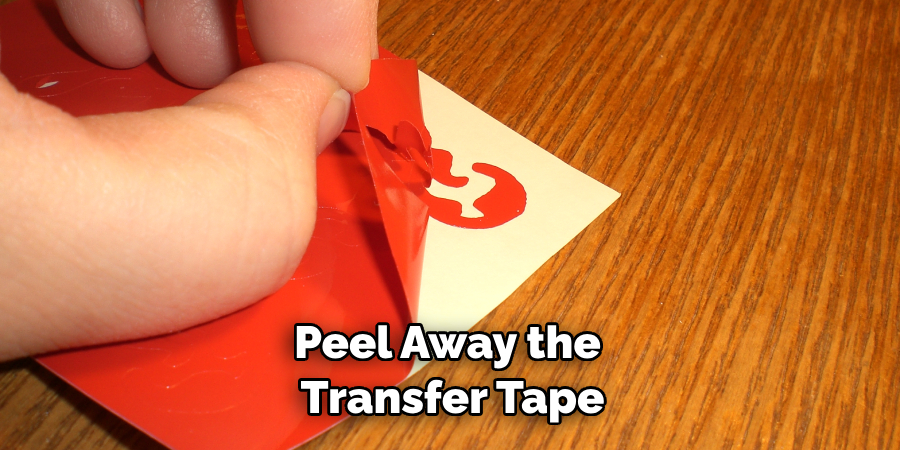
Step 8: Let Cool and Enjoy!
After heating up each section of vinyl, let the wood surface cool completely before moving on to the next step. Once the wood is cool, you’re done! Enjoy your new decorative piece and show off your great work.
Following these steps on how to transfer vinyl to wood will ensure a successful transfer that is long-lasting and visually appealing. Whether it’s for yourself or a friend, the result will be sure to impress. Have fun creating your own unique designs with vinyl transfers, and remember: practice makes perfect!
8 Safety Precautions to Take When Transferring Vinyl to Wood
When transferring vinyl to wood, safety is paramount. Follow these eight steps to ensure you stay safe while completing the job:
- Make sure that your hands are covered in white gloves when handling vinyl, as oils from your skin can cause the adhesive to not properly stick and can also damage the material of the vinyl.
- Carefully remove any dust and dirt from the wood surface with a vacuum cleaner or a mild detergent before applying the vinyl.
- Clean the area where you intend to transfer your vinyl with a lint-free cloth dampened in isopropyl alcohol. This will help prevent any smudges, as well as remove any remaining dust and dirt that could interfere with the adhesion of the vinyl.
- Make sure that you position your vinyl correctly before applying it to the wood surface; using a measuring tape can help you accurately place it in its intended spot.
- Prior to applying, ensure that all transfer paper is securely held down on both sides of the vinyl, as this will allow for a smooth transfer.
- Take care when using a squeegee or spatula to remove the air bubbles; use gentle pressure and make sure that you evenly spread it across the vinyl to avoid any wrinkles in the material.
- Allow the vinyl to sit on the wood surface for 24 hours before exposing it to water, as this will give the adhesive time to properly set.
- Lastly, use a soft cloth or brush to clean off any remaining dust or dirt from the vinyl before fully enjoying your transfer!
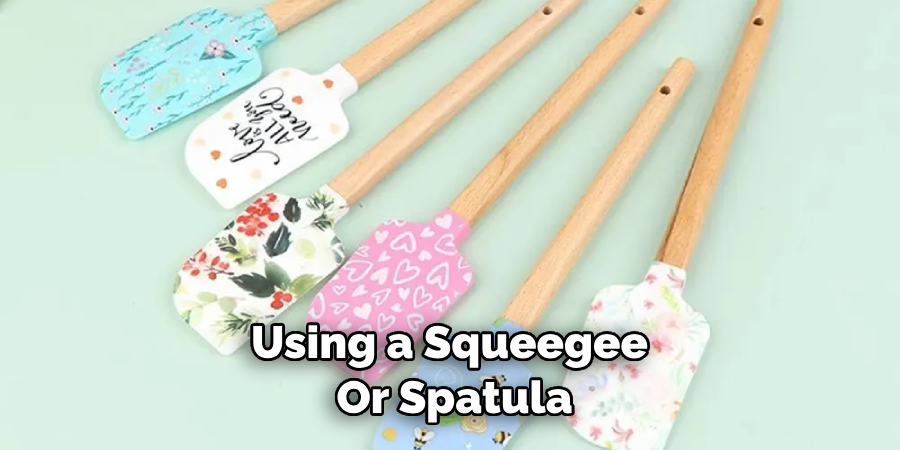
Following these safety precautions on how to transfer vinyl to wood can help you achieve a flawless and successful result when transferring vinyl to wood. With proper care and attention, you’ll be able to proudly showcase your new creation!
8 Maintenance Tips for Transferring Vinyl to Wood
Transferring vinyl to wood is a great way to give a surface an updated look. But with all projects, there are maintenance tips you should be aware of that will help ensure your project’s success. Here are some helpful hints for transferring vinyl to wood.
- Clean the surface. Before attempting any transfer, use a damp cloth to wipe down the surface and make it free of dust and dirt. Cleaning the surface ensures your project will be a success.
- Prepare the vinyl. Before you begin transferring, make sure to prepare the vinyl by cutting it to the appropriate size and shape for your project. You’ll also want to ensure that no air bubbles will form when you apply it.
- Heat the wood. Heating the wood before transferring will help make the transfer easier and reduce air bubbles.
- Use a smoother to press down the vinyl. As you’re applying pressure on the vinyl, use a smoother to ensure it is properly adhering to every part of the surface.
- Trim away excess vinyl. If any excess vinyl hangs on the sides of the wood, be sure to trim it off with a sharp knife or razor blade. Trimming the excess will help create a cleaner look.
- Let it cure. After transferring, let your project sit and cure for at least 24 hours before using it or adding any decorations to it. Letting it cure helps the vinyl adhere better and last longer.
- Seal the wood. After the project has cured, use a polyurethane sealer to protect your project from moisture and dirt. This will help ensure its longevity.
- Enjoy your work! Once you’ve done all of the steps above, you can now enjoy your newly-transferred vinyl project! Be sure to show off your hard work and be proud of the results.
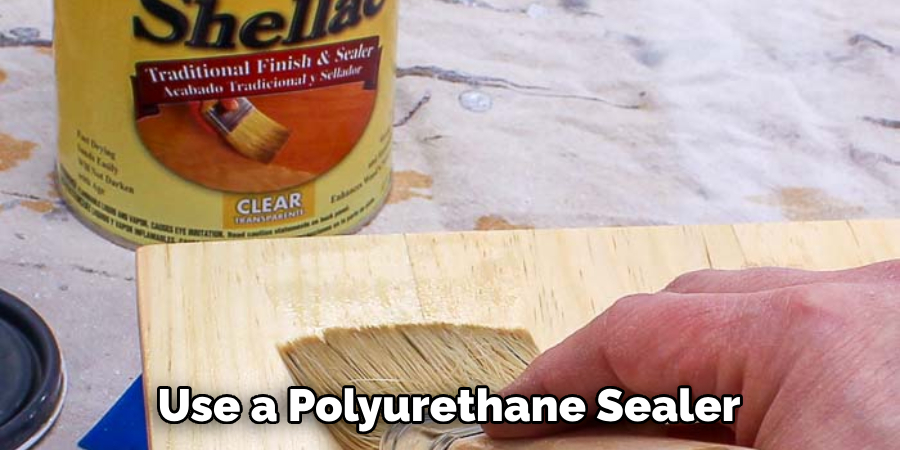
By following these steps on how to transfer vinyl to wood, you’ll be well on your way to creating a beautiful and lasting piece with vinyl transfers onto wood. Have fun with your projects, and don’t forget to read up on any tips or tricks as you go along – there are lots of great resources online.
Tips for Choosing the Right Vinyl Transfer
When it comes to choosing the right vinyl transfer for your project, there are a few things you should consider. First, think about the kind of aesthetic you want to have. Do you want to go with something more classic or modern? Once you’ve decided on that, look for vinyls that match the style you have chosen.
You’ll also want to choose a type of vinyl that is suitable for your project and environment. Make sure to check the label on each transfer to ensure it’s compatible with the wood surface you’re using. Finally, be aware of any potential hazards or dangers related to the use of vinyl, and always read the instructions carefully to ensure safe use.
Frequently Asked Questions
How Long Does It Take?
Transferring vinyl to wood usually takes an hour or two, depending on the size of the project. To ensure a good finish, you should take your time and allow for any drying times associated with each step. Also, it’s important to note that any heat applied to the vinyl during the transfer may affect the adhesive qualities of the material.
What Kind of Vinyl Can I Use?
Vinyl is available in a variety of forms, such as standard matte or glossy sheets, as well as pre-cut letters and images. You can use either type for transferring to wood, though pre-cut letters and images will be easier to work with.
What Kind of Wood is Best?
Most woods are suitable for transferring vinyl, but some may absorb too much moisture during the process. If you are uncertain about what kind of wood to use, it is best to choose a material with low absorption properties, such as poplar or maple.
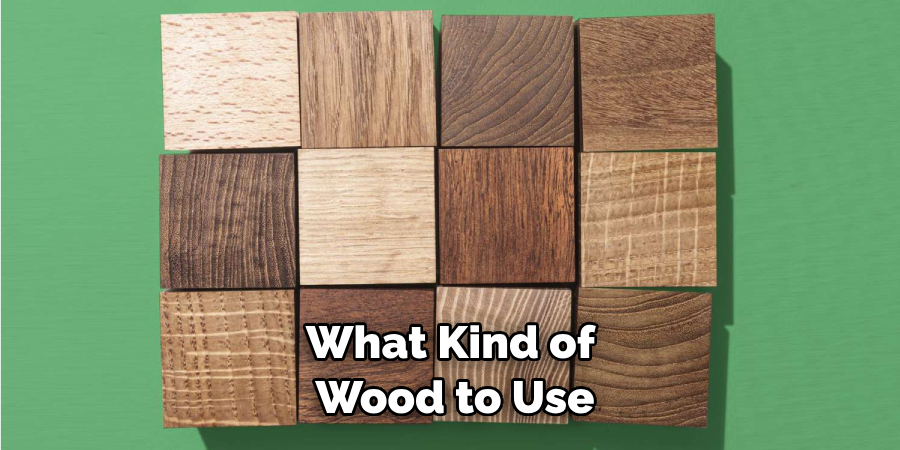
How Many Coats of Finish Do I Need?
The number of coats will depend on the type of finish you are using and the level of protection you need. For most projects, two to three coats should suffice. Be sure to allow for adequate drying between each coat to ensure a good finish and maximum longevity.
Conclusion
In the end, vinyl transfer to wood is a great DIY project for anyone and will create an amazing finished product. Be sure to take your time and make sure you sand down the wood before application and that your vinyl transfer tape lines up with your graphic correctly. Truly, the satisfaction that comes with creating something from nothing will be worth it when you are finished.
With all this in mind, why not gather a few tools today and begin crafting something truly unique? At the least, it’s something fun to do in the safety of your own home, so why hesitate? Now more than ever, we can express our creative sides in interesting ways.
Let us break away from our safe havens and explore all that can be done with these simple tricks and tips we mentioned today! Following the steps on how to transfer vinyl to wood outlined in this guide, you can achieve a beautiful and memorable piece of art that will last for years to come. So go ahead and let your inner artist take over!

